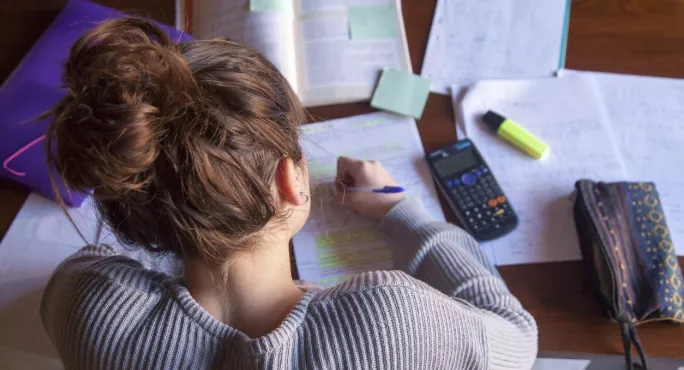- Home
- 3 study skills to reduce workload and boost revision
3 study skills to reduce workload and boost revision

In these strange times of coronavirus and remote learning it could be easy to let normal practices start to seem irrelevant. But it’s also important we try and retain our core focus on teaching and learning and how we help students become the best learners they can.
One issue around this is workload. Usually when we talk about reducing workload we focus on what we as teachers can do to modify our delivery and preparation to save ourselves time. Understandably so.
Read more: GCSEs: 3 motivational tools teachers use that dont work
From the magazine: 4 steps to make maths feel more relevant to pupils
Listen: Why ‘Spatial ability’ could be the key to Stem success
However, developing study skills in our students not only has the goal of saving us time but also making them better learners too. There are three simple ways teachers can start do this.
Cornell notes
Teaching students to take notes effectively adds huge value to other revision resources.
After all, there is a plethora of online videos, revision books and, of course, students own notes that they can use. Often though they don’t have a simple and effective way to engage with these resources.
The Cornell Note Taking method allows (and encourages) a systematic format for condensing and organising notes. Although there is no fixed format, one of the most popular ways to use the system is in two columns. The note-taking column (normally on the right) is twice the size of the questions/keyword column (on the left).
The student leaves space at the bottom of the page for a summary of the notes. By training students on how to effectively use this method, you can save any time you may have spent producing resources and most importantly, Cornell Notes encourage engagement with materials.
We all know the benefits of spaced practice and this method allows for exceptional revisiting and self-testing another key factor in building self-efficacy.
Dual coding
Dual Coding is a concept that is relatively well used and widely accepted by teachers. The thing is it should not just be a teaching approach. The method is, at its core, a brilliant learning tool too so encouraging students to use Dual Coding in their own revision is definitely worthwhile.
Visuals are powerful for communicating complex ideas and they can replace words but have the same effect. Effective Dual Coding (once modelled) can make revision a much more engaging exercise for some students.
Removing the myth that revision means looking at notes and having to write is very important. Images can be helpful to summarise longer ideas, leaving students with more cognitive resources to engage in higher order thinking.
Students do not need to be artists to effectively use Dual Coding either - as long as the image has association for them it is of benefit.
Talk
I think talk is an underutilised tool and once students have a better understanding of how to use it effectively, it can really add to revision.
Through effectively modelling academic discussion and scaffolding using questioning and talk frames, you can encourage students to discuss concepts in a similar way to how you would in class.
By encouraging talk as a revision tool, you can build confidence and add another dimension to studying. Coming away from paper-based revision also acts as a motivator for students.
The impact of talk revision is noticeable in class discussion and most importantly when students have a go at practice papers.
With the right support, a well-formulated verbal response can quickly replicate a written response.
Register with Tes and you can read two free articles every month plus you'll have access to our range of award-winning newsletters.
Keep reading with our special offer!
You’ve reached your limit of free articles this month.
- Unlimited access to all Tes magazine content
- Save your favourite articles and gift them to your colleagues
- Exclusive subscriber-only stories
- Over 200,000 archived articles
- Unlimited access to all Tes magazine content
- Save your favourite articles and gift them to your colleagues
- Exclusive subscriber-only stories
- Over 200,000 archived articles



